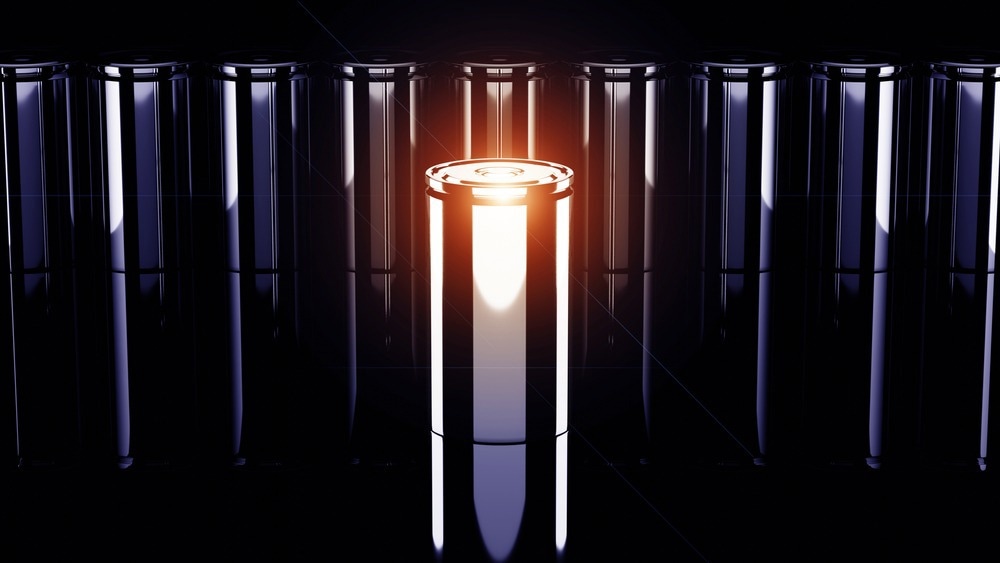The creation of cost-effective electrocatalytic nanostructures for effective oxygen reducing reaction (ORR) and oxygen evolution reaction (OER) via functional and morphology control is a significant obstacle for prospective power storage applications.

Study: Facile synthesis of carbon nanosheet arrays decorated with chromium-doped Co nanoparticles as advanced bifunctional catalysts for Zn-air batteries. Image Credit: P5h/Shutterstock.com
This problem is addressed in a recent study published in the International Journal of Hydrogen Energy by establishing carbon nanosheets doped with cobalt nanocomposites as versatile catalysts for next-generation Zn-air batteries.
Zn-Air Batteries: Overview and Limitations
The depletion of fossil fuel sources and the degradation of the environment have accelerated the growth of environmentally friendly energy storage and conversion systems. Researchers have recognized Zn-air batteries as an optimal self-sustaining electrochemical conversion system due to their low cost, outstanding protection, and zero-emission.
Unfortunately, the high overpotential of the oxygen evolution reactivity (OER) during recharge and the ineffective treatment thermodynamics of the oxygen reduction reaction (ORR) during release seriously impedes the rapid advancement of Zn-air batteries.
The oxygen electrocatalysts' unsatisfying reliability, low cost-efficiency, and lack of resources limit their widespread commercial development. Nonetheless, it is now possible to mass-produce Zn-air batteries using highly appreciated, earth-abundant, high cost-efficiency, and more reliable non-precious metal-based electrocatalysts.
Transition Metal Nanocomposites: The Future of Electrocatalysts
Transition metal nanocomposites have displayed impressive electrocatalytic behavior and long-term reliability as bifunctional oxygen electrode materials. High-performance transition metal-based precursors crosslinked with carbon can enhance the discharge and charge effectiveness of Zn-air batteries, paving the way for their commercialization.
Cobalt-based electrode materials have recently piqued the interest of researchers due to their relatively high reliability and remarkable electrical and chemical functions, which stem from numerous electron setups and plentiful morphologies.
Despite significant efforts to improve the photocatalytic activity of cobalt-based nanostructures, the overall catalytic characteristics of the ORR and OER remain unsatisfying due to their low electrical conductivity. The use of chromium (Cr) to attenuate the electronic properties of cobalt atoms for the OER has received a lot of attention. However, the process for improving the ORR effectiveness of active sites is still unknown.
What are Zeolitic Imidazolate Frameworks (ZIFs)?
Because of their high nitrogen composition and consistent nanoscale morphological characteristics, zeolitic imidazolate frameworks (ZIFs) have piqued the interest of researchers as constituents of oxygen electrocatalysts with plentiful active sites. The carbon configuration derived from ZIF catalysts inhibits agglomeration of the highly exposed catalyst surface, and the blended morphology proficiently accelerates diffusion during the electrochemical reaction mechanism.
Furthermore, growing ZIFs on an encouraging material, such as electrospun nanofibers, can inhibit the aggregation of ZIF-based components and regulate their size, increasing their catalytic performance for different energy storage applications, such as Zn-air batteries.
A Novel Electrocatalyst for Zn-air Batteries
Electrospinning systems, ZIF manufacturing, and Cr-doping were successfully merged in this study to produce polyfunctional oxygen electrocatalysts as air cathodes in Zn-air batteries. A solution-based metal cations adhesion and chemical activation approach was used to successfully prepare Cr-doped nanostructured arrays obtained from ZIFs.
Polyfunctional electrode materials improve mass transfer and physical properties in Zn-air batteries. Meanwhile, the high-valence element chromium modifies the electrical properties of transition metal nanomaterials, increasing electrical conductance and thus catalytic properties.
Key Developments of the Study
The as-prepared blended catalysts for Zn-air batteries, composed of a specific quantity of Cr-doped nanostructured arrays on carbon nanofibers (indicated as Cr0.10-Co@NC), perform exceptionally well in alkaline conditions. Moreover, the homogeneous 3D structure of the Cr-doped nanocomposites is credited for their flawless electrocatalytic consistency. The hybrid framework of catalysts greatly reduces active site agglomeration in Zn-air batteries.
The various advantages of the as-prepared cathode are due to the innovative formation of the 3D structure and the governing framework of cobalt electron density after Cr doping, which increases the density and charge transition process during the catalytic process.
Furthermore, the Zn-air batteries outperform conventional platinum-based rivals in terms of discharge effectiveness and charge-discharge cycle longevity by employing Cr0.10-Co@NC as a polyfunctional catalyst. These experimental findings demonstrate that the as-prepared polyfunctional catalyst performs well and has the potential to be used as a precursor in rechargeable Zn-air batteries.
Reference
Zhao, S. et al. (2022). Facile synthesis of carbon nanosheet arrays decorated with chromium-doped Co nanoparticles as advanced bifunctional catalysts for Zn-air batteries. International Journal of Hydrogen Energy. Available at: https://www.sciencedirect.com/science/article/pii/S0360319922030300?via%3Dihub
Disclaimer: The views expressed here are those of the author expressed in their private capacity and do not necessarily represent the views of AZoM.com Limited T/A AZoNetwork the owner and operator of this website. This disclaimer forms part of the Terms and conditions of use of this website.